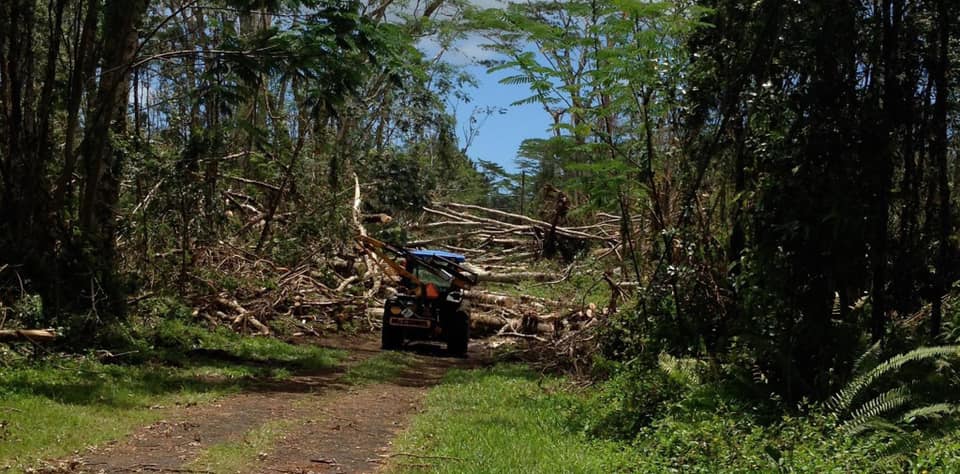Family: Fabaceae
Albizia (Falcataria moluccana) is a large invasive tree. Native to lowlands in the Molucca Islands (Indonesia), it was imported by Joseph Rock in 1917 as a quick ‘fix’ for watershed restoration.
In 5 to 10 years in the late 1800’s/early 1900s, impenetrable forests were trampled and destroyed by cattle. Once covered in a diverse array of native species, hillsides were turned into barren wastelands due to wild ungulates’ voracious appetite. Once void of vegetation, the sun’s heat baked the earth, rendering the soil unable to absorb water. Sheets of muddy water gushed down the mountains bringing topsoil and smothering the coral reefs with debris. Catastrophic erosion was happening in real time.
Joseph Rock thought he was saving Hawaii by importing albizia. He didn’t think albizia would be long-lived and said its redeeming quality was its ability to self-seed. The same trees Rock planted were cut down 100 years later at the cost of $900,000!
At 15 feet of growth PER YEAR, Albizia is the fastest-growing tree globally, but only in Hawaii. Grown in Florida or Australia, albizia will not perform the same way. It forms weak, brittle wood, matures quickly, and spreads easily through wind-borne seeds. It poses a serious threat to both our natural environment and our public safety. The Big Island Invasive Species Committee offers public education classes on control methods.

Description and Dispersal:
- A large tree with a massive trunk up to 150 feet tall.
- The expansive, spreading crown has a flat top.
- Green leaves are twice pinnately compound.
- Creamy white or yellow flowers are scented.
- Seeds, adapted to wind dispersal, are contained in a lightweight pod.




